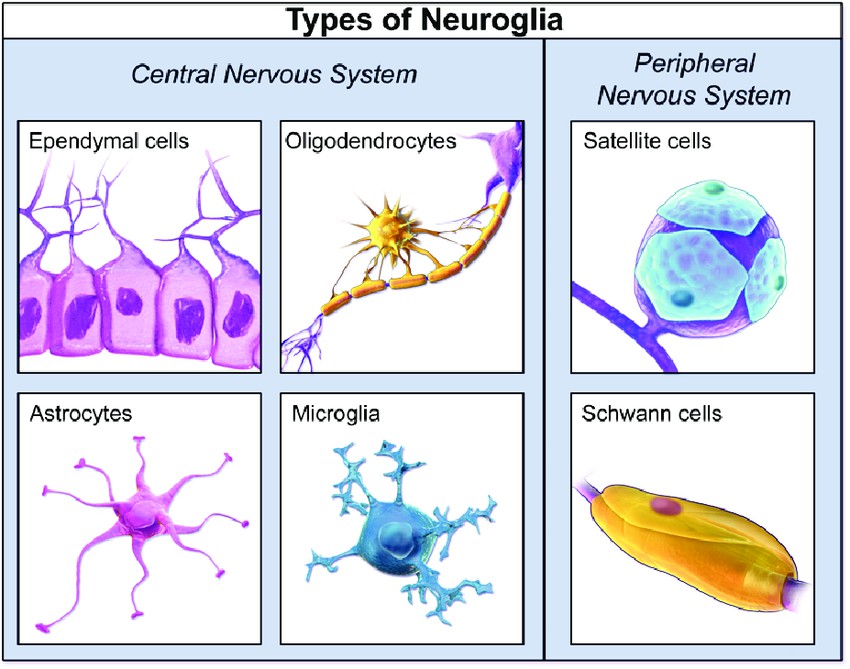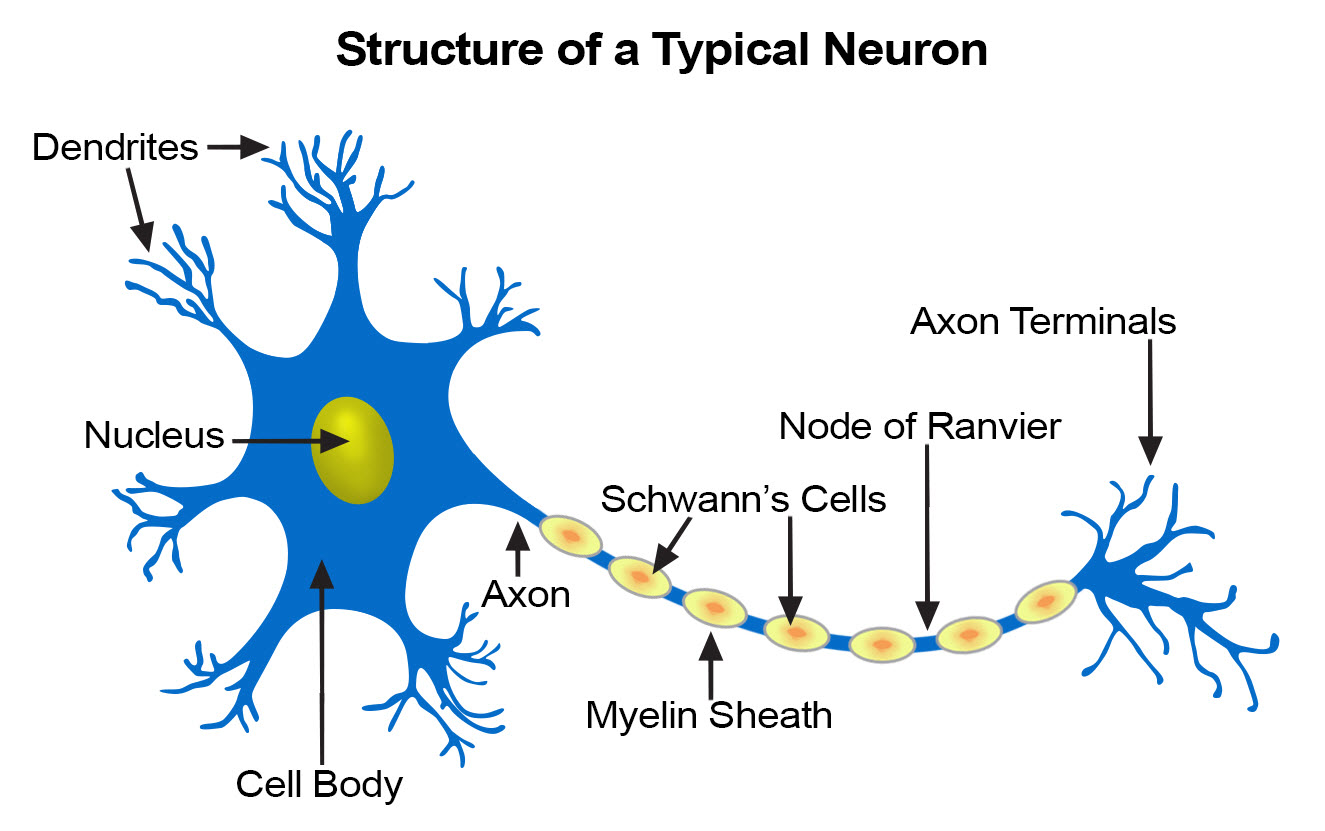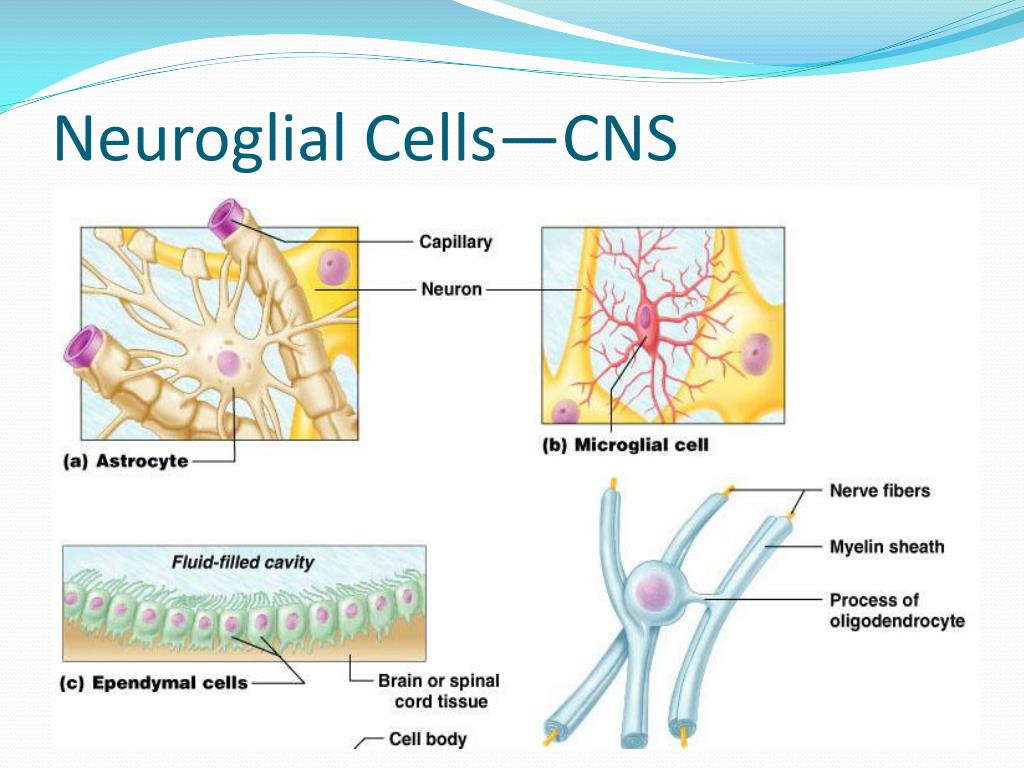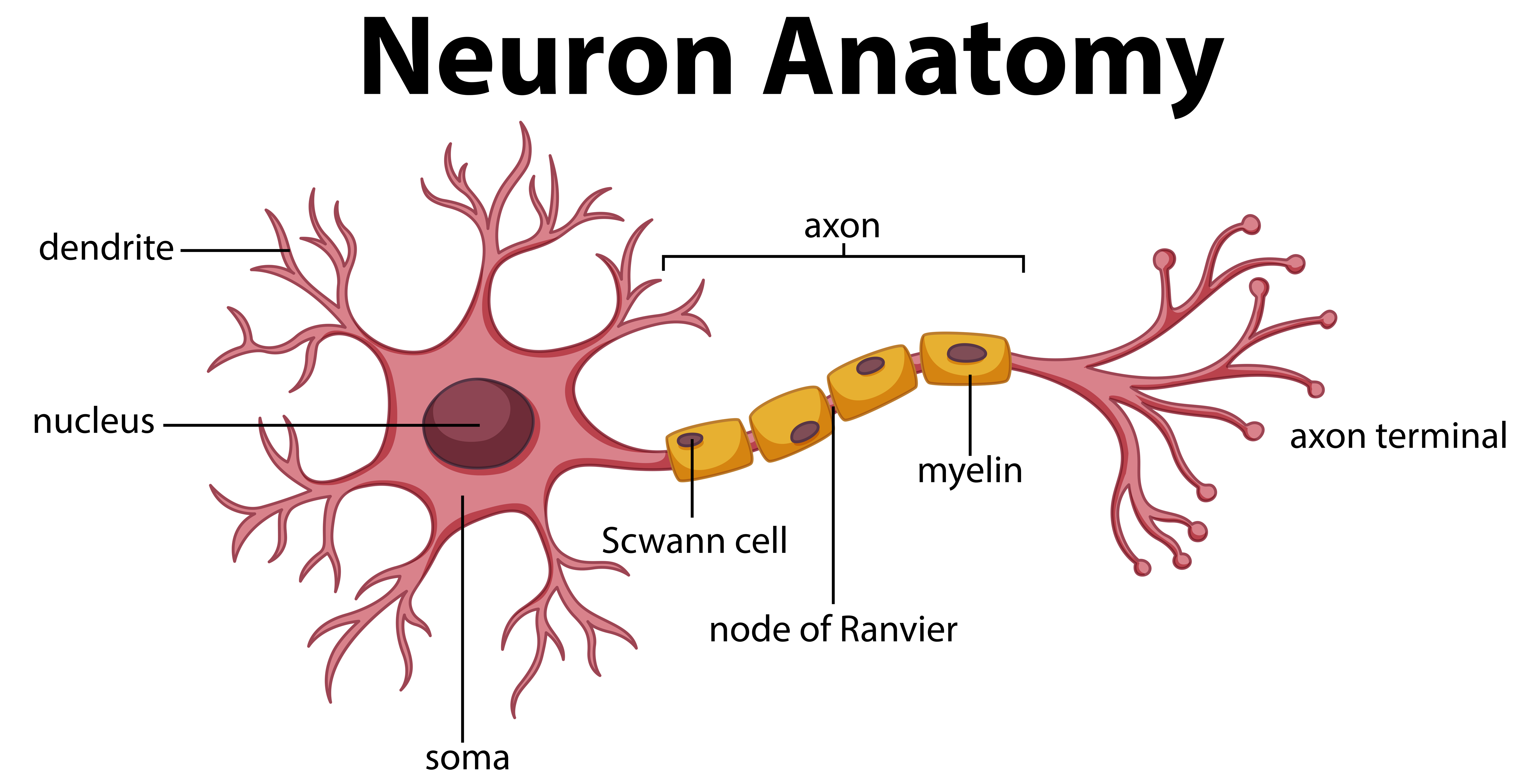What Type Of Cells Function To Nourish And Support Neurons

Imagine a bustling city, a metropolis of intricate pathways and vital connections. Cars whiz by, delivering essential supplies, maintaining the infrastructure, and ensuring everything runs smoothly. But what if these weren't cars, but cells, and the city wasn't made of concrete and steel, but of brain tissue? This vibrant, complex network, the very essence of our thoughts and feelings, relies on more than just the 'cars' – the neurons themselves.
At the heart of the brain's remarkable functionality lies a cast of supporting characters: the glial cells. These unsung heroes are the caretakers of the nervous system, providing the nourishment, protection, and structural support that neurons need to thrive. Understanding their crucial role is key to unlocking the secrets of brain health and combating neurological disorders.
The Stellar Cast of Glial Cells
The term 'glia,' derived from the Greek word for 'glue,' was coined by the renowned pathologist Rudolf Virchow. He initially believed these cells merely held neurons together. However, modern neuroscience has revealed that glial cells are far more than just passive adhesive. They are active participants in brain function.
Astrocytes: The Nutrient Providers and Homeostatic Balancers
Astrocytes, named for their star-like shape, are the most abundant type of glial cell in the brain. They are intimately connected to both neurons and blood vessels. They play a pivotal role in maintaining the delicate balance of the brain's environment.
These cells act as nutrient providers, shuttling glucose from the blood to neurons for energy. They also regulate the concentration of ions and neurotransmitters around synapses, ensuring efficient neuronal communication. This process is crucial for preventing excitotoxicity, a condition where excessive neuronal activity leads to cell damage.
Astrocytes also contribute to the blood-brain barrier, a protective shield that prevents harmful substances from entering the brain. Their endfeet surround blood vessels, forming a tight barrier and carefully controlling what passes through.
Oligodendrocytes: The Myelin Makers
Oligodendrocytes are responsible for myelination, the process of wrapping axons in a fatty substance called myelin. Myelin acts as an insulator, dramatically increasing the speed and efficiency of nerve impulse transmission. Without myelin, neural signals would travel much slower, impairing brain function.
Each oligodendrocyte can myelinate multiple axons, extending its reach across several neurons. Damage to oligodendrocytes and the myelin sheath is a hallmark of demyelinating diseases such as multiple sclerosis (MS). In MS, the immune system attacks myelin, leading to impaired nerve conduction and a range of neurological symptoms.
Microglia: The Brain's Immune Defenders
Microglia are the brain's resident immune cells. They are the first line of defense against infection and injury. They constantly patrol the brain, scavenging for pathogens, cellular debris, and damaged neurons.
When microglia detect a threat, they become activated, transforming into phagocytic cells that engulf and remove debris. They also release inflammatory signals that recruit other immune cells to the site of injury. While inflammation is necessary for healing, chronic inflammation can be detrimental to brain health.
Ependymal Cells: The CSF Circulators
Ependymal cells line the ventricles of the brain and the central canal of the spinal cord. They produce cerebrospinal fluid (CSF), a clear fluid that cushions the brain and spinal cord, providing protection from injury. Ependymal cells also have cilia, hair-like structures that beat in a coordinated manner to circulate CSF throughout the central nervous system.
Schwann Cells: The Peripheral Nervous System's Myelinators
While oligodendrocytes myelinate axons in the central nervous system (brain and spinal cord), Schwann cells perform the same function in the peripheral nervous system. Each Schwann cell myelinates a single segment of an axon. They are crucial for the proper functioning of nerves throughout the body.
The Significance of Glial Cell Research
Understanding the roles of glial cells is revolutionizing our understanding of brain function and disease. Traditionally, neuroscience has focused primarily on neurons. It is now clear that glial cells play a critical role in nearly every aspect of brain health.
Research is uncovering the involvement of glial cells in a wide range of neurological disorders, including Alzheimer's disease, Parkinson's disease, stroke, and traumatic brain injury. Targeting glial cells could offer new therapeutic strategies for these debilitating conditions.
For example, researchers are exploring ways to promote astrocyte function in Alzheimer's disease to improve neuronal support and reduce the accumulation of amyloid plaques. In stroke, strategies are being developed to modulate microglia activity to reduce inflammation and promote tissue repair.
A Future Focused on Glia
As we continue to unravel the complexities of the brain, the importance of glial cells becomes ever more apparent. They are not merely support cells, but active participants in neuronal communication, brain development, and immune defense. Investing in glial cell research is an investment in the future of brain health.
By understanding how glial cells function and how they contribute to disease, we can develop new and effective treatments for a wide range of neurological disorders. The future of neuroscience lies not only in understanding neurons, but in appreciating the crucial role of their glial partners in this complex and fascinating system.
The city of the brain, with its bustling traffic of neurons, relies on the tireless efforts of its glial caretakers. As we delve deeper into their secrets, we move closer to unlocking the mysteries of the mind and paving the way for a healthier, more vibrant future for all.


















